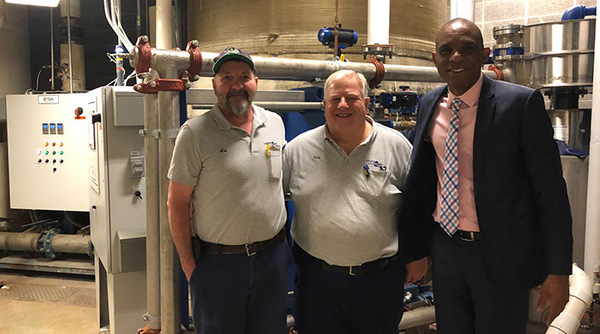
St. Michael’s Laundry recently installed a high-efficiency wastewater heat recovery and filtration system, known as Thermal Engineering of Arizona or TEA (and no, the water is not recycled and used to make tea). The system has allowed the University to reduce its environmental impact by reducing its carbon emissions, lowering energy expenses and lowering operating costs. Each year, the system will reduce the University’s carbon dioxide emissions by 80 tons, which is equivalent to providing energy to more than eight homes annually.
The TEA system recovers the heat from the hot water previously used in the wash cycle and transfers it from one water stream to another, where it is processed and used all over again. The system recovers more heat if there is a larger temperature difference, meaning colder climates, might benefit from heat recovery more than mild climates would.
St. Michael’s Laundry processes 3 million pounds of laundry a year, using 42,000 to 46,000 gallons of water each day (and you thought you had a lot of laundry to do!).
The TEA system works like this:
When a washing machine drains, the water goes into a holding pit. Once the water in the pit reaches a certain level, the water is pumped into a shaker screen (think very large sifter) where the lint is separated out. The water then travels through heat recovery coils and, depending on the actual water temperature, the system diverts the water into either a hot or a tempered water tank. The heat is removed from the water, and the cooler water is released into the sewer system. The system then shuts down and waits for the next time the water is needed. The TEA system is fully automated and can be monitored remotely for optimal efficiency.
For more information on other sustainability-related campus initiatives, visit the Office of Sustainability’s website.